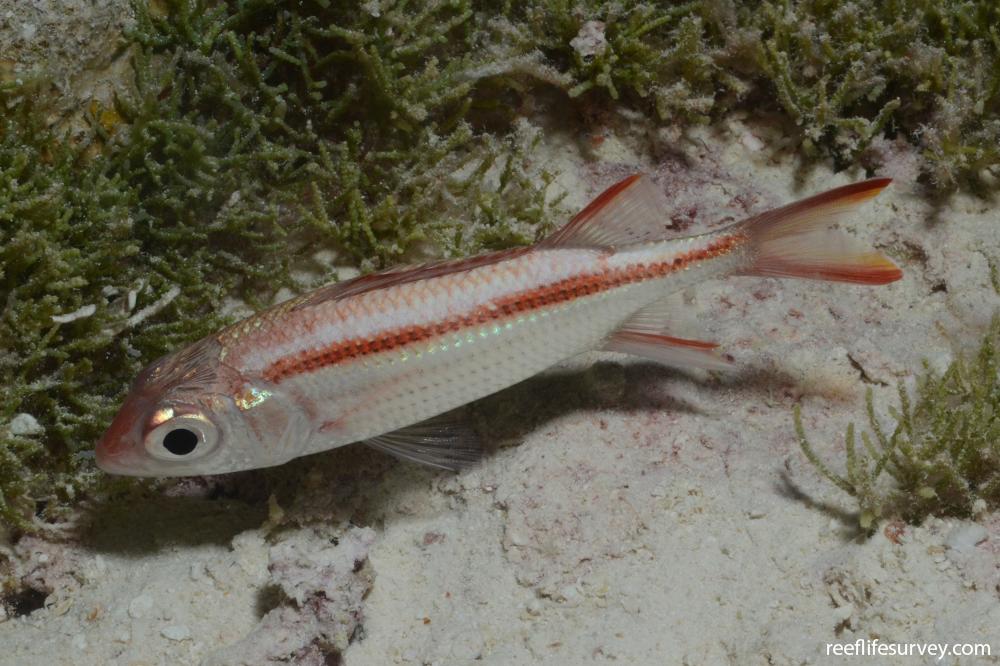Neoniphon argenteus
Silver Squirrelfish | Clearfin Squirrelfish | Smooth SquirrelfishSimilar Species
Same Genus
Distribution
Tropical Indo-Pacific
Description
Narrow rows of densely packed brown spots along body with a double row of smaller red spots along lateral line, spots on cheek and an oval shaped red blotch on gill cover. Soft parts of dorsal, anal and tail fins yellow and leading edges red. N. sammara (Slender Squirrelfish), also has narrow body stripes but has large black blotch in spiny dorsal fin. Also similar N. opercularis (Blackfin Squirrelfish) lacks distinct body stripes. Night phase is white with red lateral line. Shy and secretive, hidden in or near branching corals during the day.
Information
Max Size: 24 cm
Sea Temperature Range: 23.4-31.3°C
Depth: 1-20m
Habitat Generalization Index: 1.28
Also referred to as the SGI (Species Generalisation Index), this describes the habitat niche breadth of the species. Species with values less than 15 are found in a relatively narrow range of reef habitat types (specialists), while those over 25 may be found on most hard substrates within their range (generalists). Learn more here.
Conservation and Rarity
IUCN Status: Not Evaluated
Occurrence: Infrequent (5.3% of sites)
Occurrence describes how often the species is found on surveys within its distribution. It is calculated as the % of reef sites surveyed by RLS divers across all the ecoregions in which the species has been observed
Abundance: Few (5 per transect)
Abundance is calculated as the average number of individuals recorded per RLS transect, where present.
Edit by: Joe Shields

















